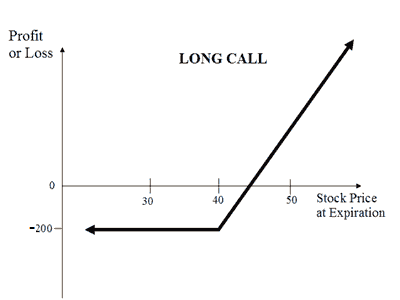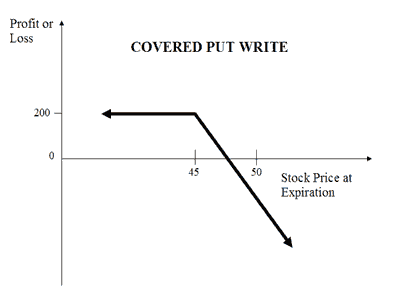 Zerodha (Trading & Demat Account)
Zerodha (Trading & Demat Account)
FREE Equity Delivery and MF
Flat ₹20/trade Intra-day/F&O
 Zerodha (Trading & Demat Account)
Zerodha (Trading & Demat Account)
FREE Equity Delivery and MF
Flat ₹20/trade Intra-day/F&O

|
|
Compare Long Call and Covered Put (Married Put) options trading strategies. Find similarities and differences between Long Call and Covered Put (Married Put) strategies. Find the best options trading strategy for your trading needs.
| Long Call | Covered Put (Married Put) | |
|---|---|---|
 |
 |
|
| About Strategy | A Long Call Option trading strategy is one of the basic strategies. In this strategy, a trader is Bullish in his market view and expects the market to rise in near future. The strategy involves taking a single position of buying a Call Option (either ITM, ATM or OTM). This strategy has limited risk (max loss is premium paid) and unlimited profit potential. When the trader goes long on call, the trader buys a Call Option and later sells it to earn profits if the price of the underlying asset goes up. When the trader buys a call, he pays the option premium in exchange for the right (but not the obligation) to buy share or index at a fixed price by a certain expiry date. This premium is the only amount at-the-risk for trader in case the mark... Read More | The Covered Put is a neutral to bearish market view and expects the price of the underlying to remain range bound or go down. In this strategy, while shorting shares (or futures), you also sell a Put Option (ATM or slight OTM) to cover for any unexpected rise in the price of the shares. This strategy is also known as Married Put strategy or writing covered put strategy. The risk is unlimited while the reward is limited in this strategy. How to use a Protective Call trading strategy? The usual Covered Put looks like as below for State Bank of India (SBI) Shares which are currently traded at Rs 275 (SBI Spot Price): Covered Put Orders - SBI Stock OrdersSBI Strike Price Sell Underlying SharesSell 100 SBI Shares ... Read More |
| Market View | Bullish | Bearish |
| Strategy Level | Beginners | Advance |
| Options Type | Call | Put + Underlying |
| Number of Positions | 1 | 2 |
| Risk Profile | Limited | Unlimited |
| Reward Profile | Unlimited | Limited |
| Breakeven Point | Strike Price + Premium | Futures Price + Premium Received |
| Long Call | Covered Put (Married Put) | |
|---|---|---|
| When to use? | A long call Option strategy works well when you expect the underlying instrument to move positively in the recent future. If you expect XYZ company to do well in near future then you can buy Call Options of the company. You will earn the profit if the price of the company shares closes above the Strike Price on the expiry date. However, if underlying shares don't do well and move downwards on expiry date you will incur losses (i.e. lose premium paid). |
The Covered Put works well when the market is moderately Bearish |
| Market View | Bullish When you're expecting a rise in the price of the underlying and increase in volatility. |
Bearish When you are expecting a moderate drop in the price and volatility of the underlying. |
| Action |
A long call strategy involves buying a call option only. So if you expect Reliance to do well in near future then you can buy Call Options of Reliance. You will earn a profit if the price of Reliance shares closes above the Strike price on the expiry date. However, if Reliance shares don't move up within the expiry date you will incur losses. |
Sell Underlying Sell OTM Put Option Suppose SBI is trading at 300. You believe that the price will remain range bound or mildly drop. The covered put allows you to benefit from this market view. In this strategy, you sell the underlying and also sell a Put Option of the underlying and receive the premium. You will benefit from drop in prices of SBI, the Put Option will minimize your risks. If there is no change in price then you keep the premium received as profit. |
| Breakeven Point | Strike Price + Premium The break-even point for Long Call strategy is the sum of the strike price and premium paid. Traders earn profits if the price of the underlying asset moves above the break-even point. Traders loose premium if the price of the underlying asset falls below the break-even point. |
Futures Price + Premium Received The break-even point is achieved when the price of the underlying is equal to the total of the sale price of underlying and premium received. |
| Long Call | Covered Put (Married Put) | |
|---|---|---|
| Risks | Limited The risk is limited to the premium paid for the call option irrespective of the price of the underlying on the expiration date.
|
Unlimited The Maximum Loss is Unlimited as the price of the underlying can theoretically go up to any extent. Loss = Price of Underlying - Sale Price of Underlying - Premium Received |
| Rewards | Unlimited There is no limit to maximum profit attainable in the long call option strategy. The trade gets profitable when price of the underlying is greater than strike price plus premium.
|
Limited The maximum profit is limited to the premiums received. The profit happens when the price of the underlying moves above strike price of Short Put. |
| Maximum Profit Scenario | Underlying closes above the strike price on expiry. |
Underlying goes down and Options exercised |
| Maximum Loss Scenario | Underlying closes below the strike price on expiry. |
Underlying goes up and Options exercised |
| Long Call | Covered Put (Married Put) | |
|---|---|---|
| Advantages | Buying a Call Option instead of the underlying allows you to gain more profits by investing less and limiting your losses to minimum. |
Its an income generation strategy in a neutral or Bearish market. Also allows you to benefit from fall in prices, range bound movements or mild increase. |
| Disadvantage | Call options have a limited lifespan. So, in case the price of your underlying stock is not higher than the strike price before the expiry date, the call option will expire worthlessly and you will lose the premium paid. |
The risks can be huge if the prices increases steeply. |
| Simillar Strategies | Protective Put, Covered Put/Married Put, Bull Call Spread | Bear Put Spread, Bear Call Spread |


FREE Intraday Trading (Eq, F&O)
Flat ₹20 Per Trade in F&O
|
|